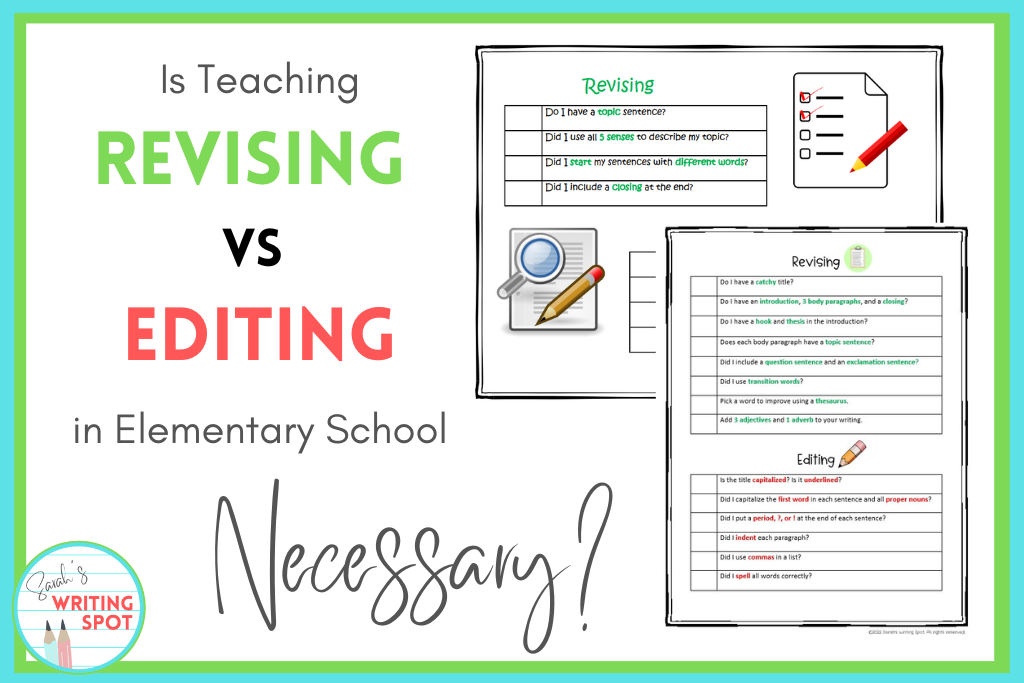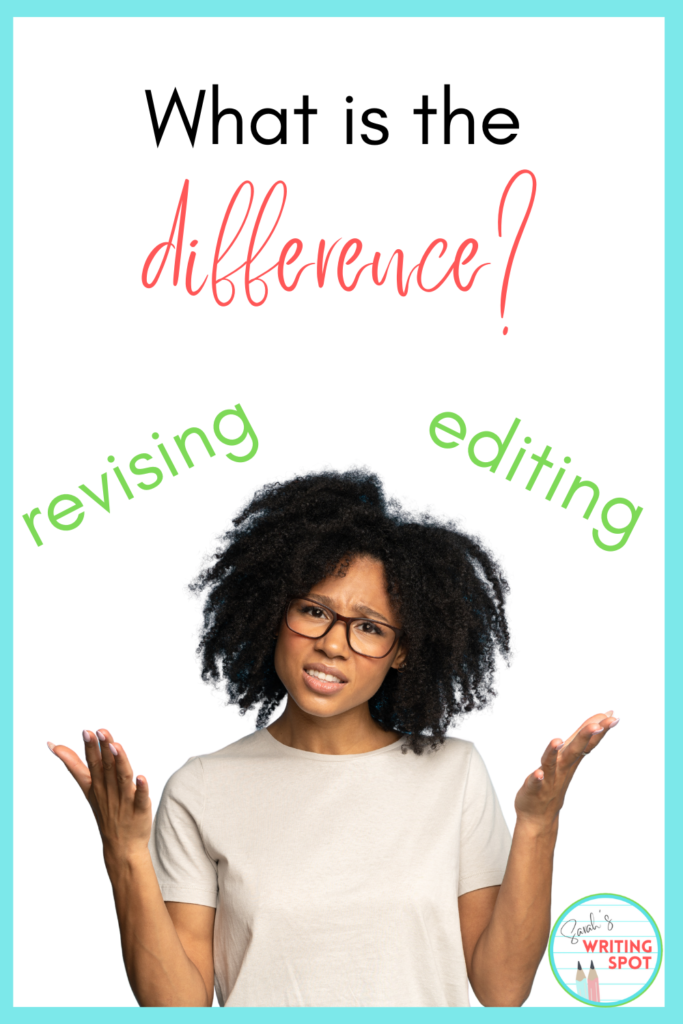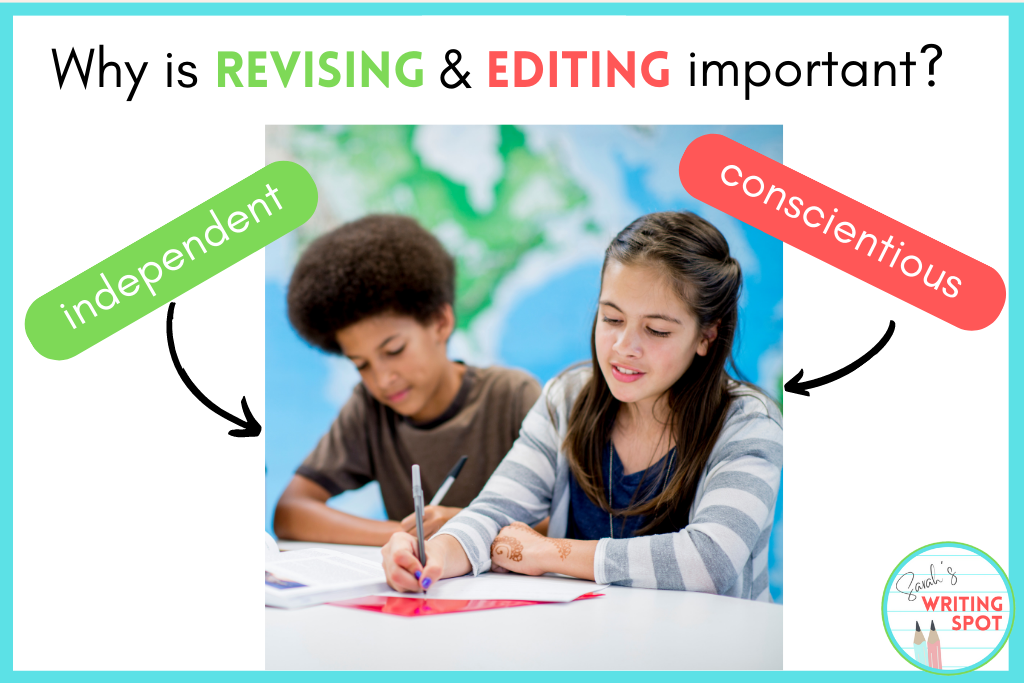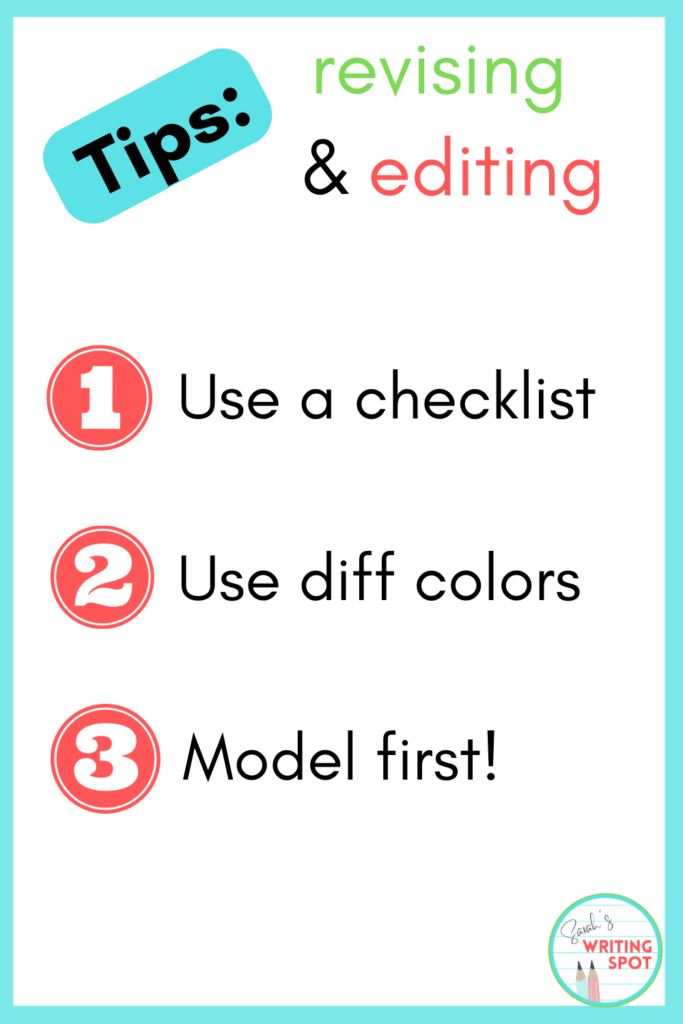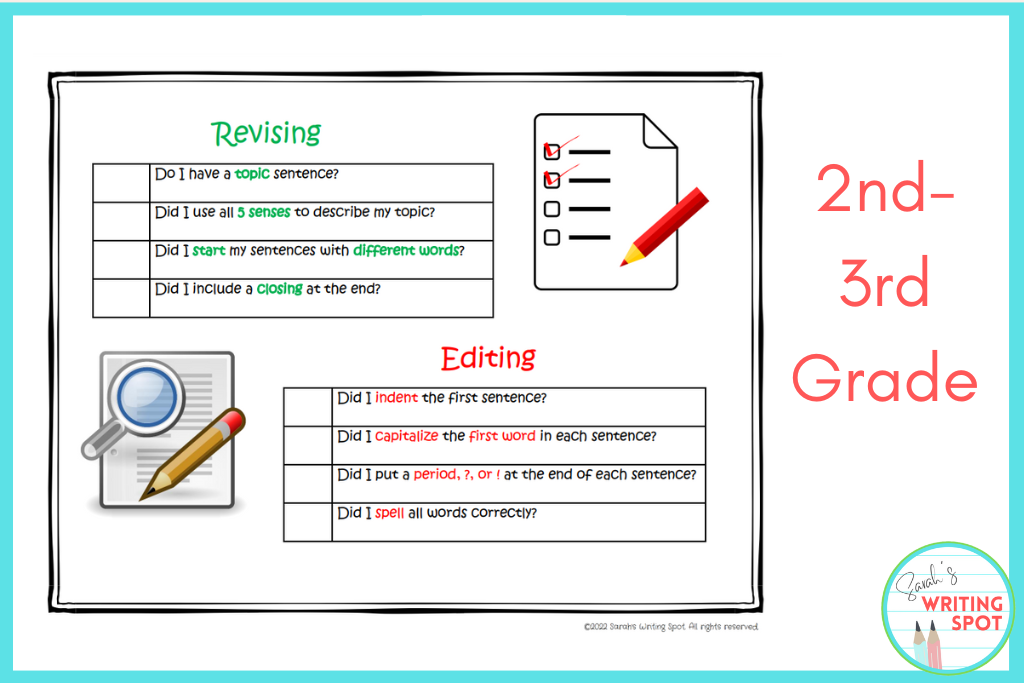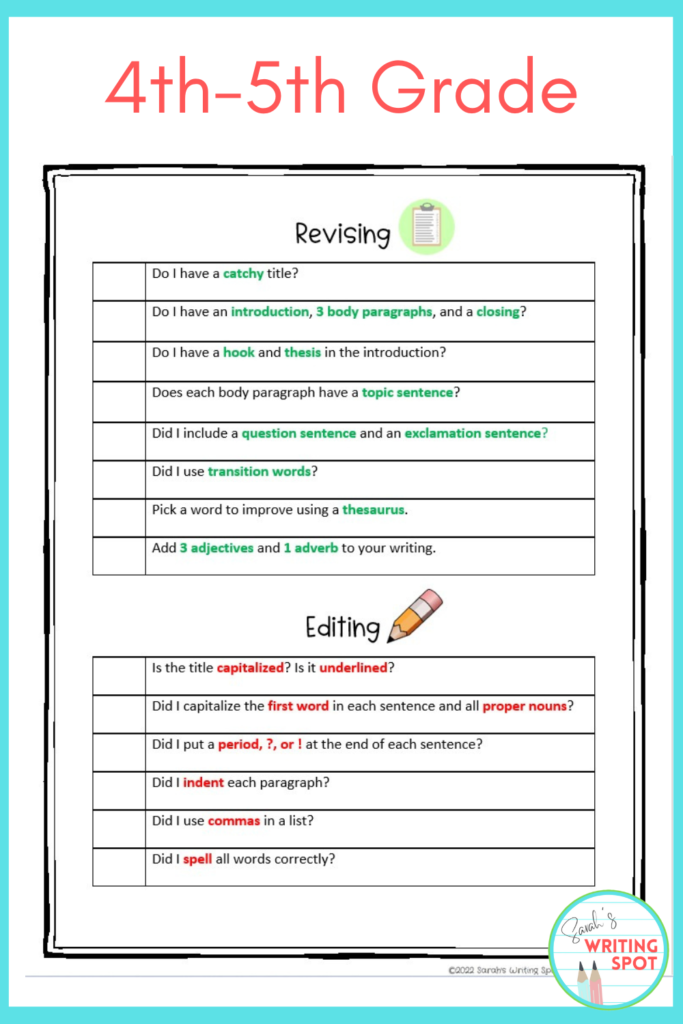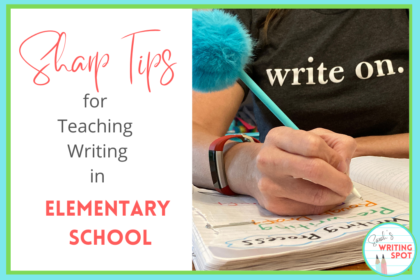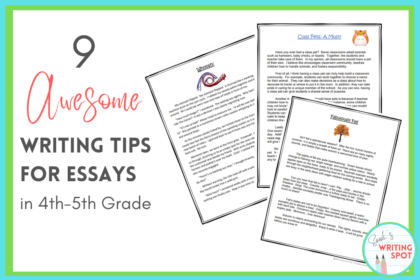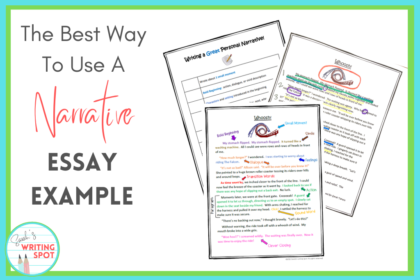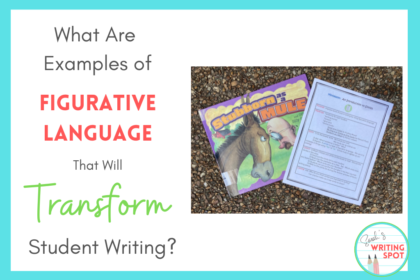Revising vs Editing. Isn’t it really just the same thing?
We all know there is a process to writing. And we all know that process includes fixing mistakes during the revising and editing steps. But, do we really need students to know the difference between the two? And if so, how do we do that?
Before we get started, though, wouldn’t it be convenient to get quick writing tips (like the ones in this blog) sent straight to your inbox each month? No more Internet searching when you have a free moment. Bing! They are just there when you need them! If you’d like to save yourself some time with free writing prompts and lesson plans, click HERE!
When I first started teaching 3rd grade right out of college, there were a lot of questions students asked me that I didn’t know the answer to. (I’m sure you can relate!) I still remember one question clearly. A curious young girl asked, “What’s the difference between revising and editing?”
To be honest, as a novice teacher, I didn’t really know! I had always kind of lumped the two steps together. I knew they both had to do with fixing mistakes and polishing up a piece before it was published, but what was really the difference between them?
I told the young student that her question was a good one! I would do some investigating and get back to the class about revising vs editing. Want to know what I learned? And how I’ve taught it ever since? Read on…
Why is Revising and Editing Writing Important?
Long gone are the days when teachers collect writing and mark it up with a red pen. Now, we take students through the entire Writing Process. They do the revising and editing themselves. But, why did we make this change? Why is revising and editing writing so important for students to do on their own?:
- Independent Writers: It sends the message that students don’t need to depend on an adult to revise and edit for them. If they have access to a revising/editing checklist, they can go through the Writing Process independently at any time. This, in turn, creates confidence in their own writing.
- Conscientious Writers: We want to nurture our students to care about the quality of their work. It takes self-discipline to return to a draft to improve it. (Many students are very reluctant to make any changes at first!) Great writers always return to their drafts to make them better…and we want our students to be great writers!
Now, does this mean teachers should never correct student writing? Not necessarily. There may be certain times when that’s appropriate. But, when students are practicing the Writing Process throughout the year, they should be given ample opportunities to revise and edit their own work. That’s how we foster strong, independent writers!
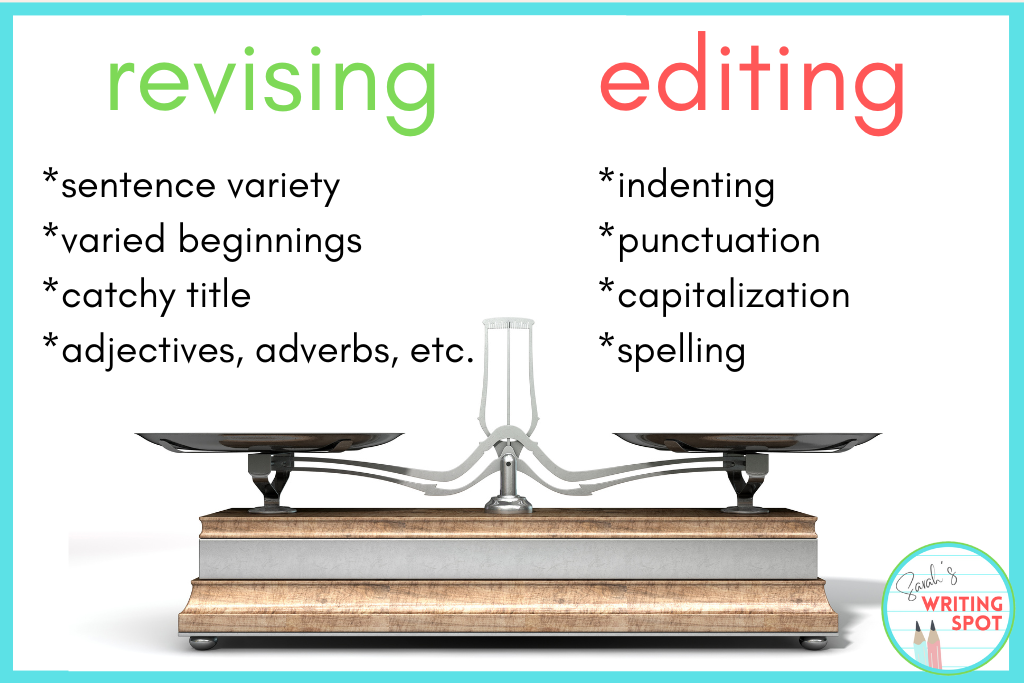
What’s the Difference?
Back to the earlier question posed by my inquisitive student: “What’s the difference between revising and editing?”
This is how I explain it to my students:
Revising is when you make sure you haven’t left out any important parts of your writing piece. (For instance, did you remember a topic sentence?) This is also your opportunity to go back into the piece and spice it up! This is your chance to make your writing piece even better. Add some adjectives, adverbs, and sounds!
Editing is the very last step right before you publish. This is where you fix any grammatical errors. (Did you capitalize all the proper nouns? Did you indent?) If your students are typing their writing, they’re lucky– most of their errors will be fixed automatically!
It’s important to include that you can naturally revise and edit while writing. You don’t have to wait to finish a draft before making corrections.
Wondering How to Teach Revising and Editing?
Now that you know the difference, how do you teach revising and editing in an engaging way?
Here are a few tips:
- Give students a checklist: Create a checklist that is directly correlated to the rubric you plan to use for grading. This way, students have the opportunity to make the best grade possible. A checklist also ensures that students can be independent with this step.
- Use red and green markers to make corrections: If students write a rough draft on paper, use green to revise and red to edit. (Or whatever colors you choose!) I like to use different colors so students can see the difference between the two processes. It also proves to me that they actually made changes to their work!
- Model for students: The first time you teach revising and editing, model these processes for your students. Using an old student’s writing piece (or a made-up one), go through a revising/editing checklist with your class. This is your chance to model any specific editing marks you prefer. Keep students engaged by having them make suggestions for you!
Most importantly, celebrate the changes students make to their writing. As a classroom activity, ask for volunteers to share some of their revised and edited drafts. Make comments such as:
“Wow! Look at all the red and green marks on your paper. I can actually see all your thinking!”
“I love how you changed the word great to inspiring! It shows that you really care about improving your story!”
When we praise students for these changes, they will keep doing it in the future. And so will their peers!
Revising and Editing Checklist Examples
So, what exactly should be on the revising and editing checklist? I recommend starting with the rubric you’ll use to grade student work. This means your revising and editing checklist may look different for each assignment.
For a 2nd-3rd grade student, your checklist may look like this:
For a 4th-5th grade student, your checklist may look like this:
What are some of the differences between revising vs. editing? Below are some general characteristics of each.
REVISING:
- includes a topic sentence (or paragraph)
- includes a closing sentence (or paragraph)
- sticks to the topic
- varies sentence beginnings
- includes different types of sentences
- uses transition words
- uses adjectives, adverbs, and descriptive language
EDITING:
- indenting
- capitalization
- spelling
- punctuation
As you can see, when analyzing revising vs editing, there are distinct differences between the two processes. Revising makes writing better and editing makes it correct!
Final Thoughts on Teaching Revising and Editing
Teaching revising and editing is one of the best parts of being a writing teacher. These two steps are where the magic happens. It’s when we can show students their mistakes can be fixed! Their writing can get messy! And they can elevate their work from good enough to dazzling!
Not only that, we can show students the magic is in their hands (and not their teacher’s red pen). They have the power to make their own writing rock!
SARAH
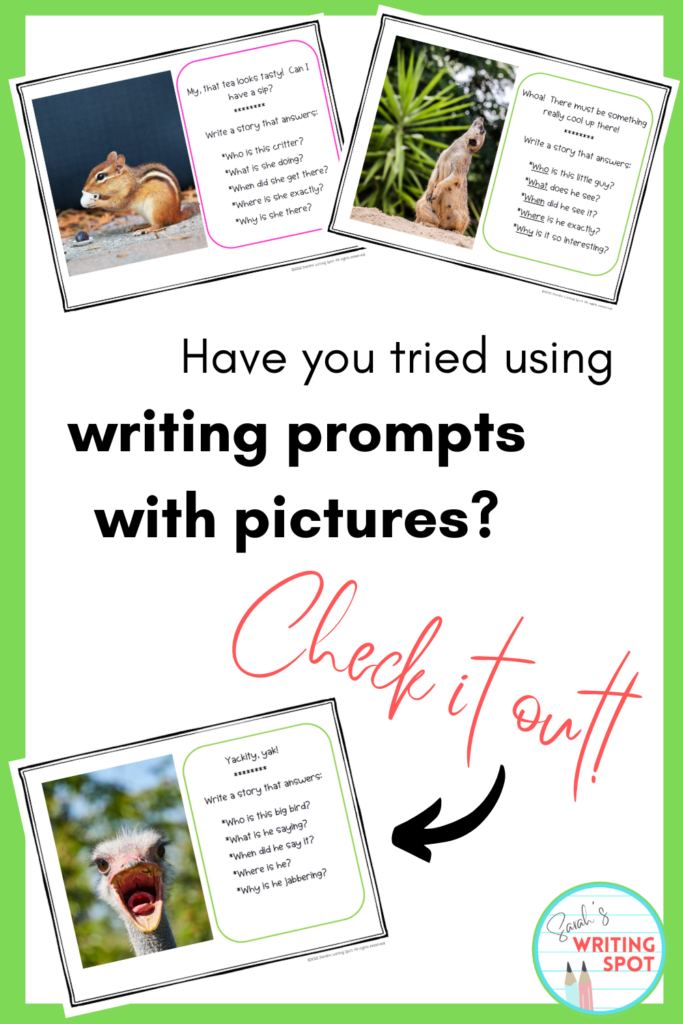
Related Articles on Revising vs. Editing in Elementary School
*4 Strategies for Teaching Students How to Revise
*3 Effective and Engaging Editing Strategies for Elementary School Students
*Implementing the Writing Process
